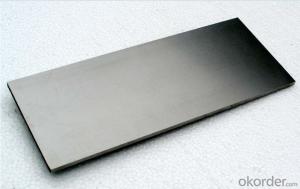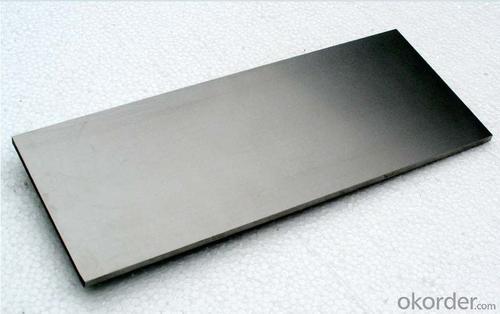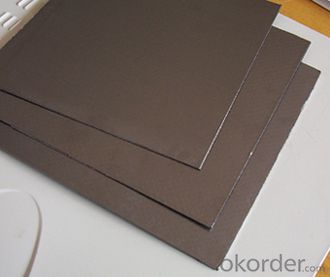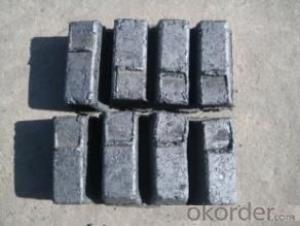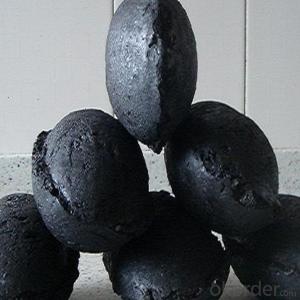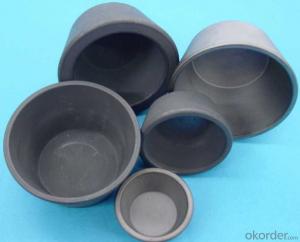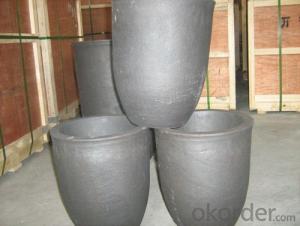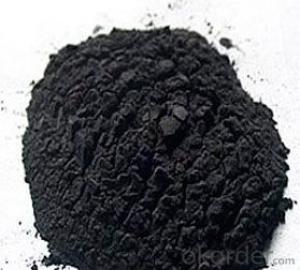Graphite Plate/CNBM Wholesale Carbon Graphite Plates
- Loading Port:
- China main port
- Payment Terms:
- TT OR LC
- Min Order Qty:
- 0 m.t.
- Supply Capability:
- 100000 m.t./month
OKorder Service Pledge
OKorder Financial Service
You Might Also Like
Packaging & Delivery
| Packaging Details: | standard export wooden package or according to customers' request |
| Delivery Detail: | 15-30days after receiving your deposit |
Product Description
Graphite plate is made form the domestic petroleum coke and widely used in the metallurgy, machinery, electronics and chemical industry, etc. The graphite plate include molded, extruded, vibrated and isostatic. Our main and most preponderant graphite plate is molded formed. Our products own the following characteristics: low electricr esistance, good electric and thermal conductivity, high oxidation resistance, greater resistance to thermal and mechanical shock, high mechanical strength, high machining accuracy and so on.
Usage
They have been used extensively in industries like solar, foundry, chemicals, electronics, ferrous metals, high-temp, heat conduction, metallurgy, lubrication, anti-corrosion .etc
1. Refractory material: widely used in the metallurgical industry.
2. Conducting material: In the electronics industry, widely used for graphite electrode, brush,, etc
3. Wear-resisting material and lubricant: Use graphite as wear-resisting and lubrication materials, can be 100m/s speed sliding in - 200 ~ 2000 °C temperature range , no or less lubricanting oil.
4. Sealing material: it can be as sealing ring in the equipment, such as centrifugal pump, hydraulic turbine ,etc.
5. Anticorrosion material: Widely used in petroleum, chemical, hydrometallurgy departments.
6. Insulation, high temperature resistant, radiation protection materials
7.Molds: hot pressing molds, static casting molds, centrifugal casting molds, pressure casting molds, fused refractory molds, etc.
8. Furnace parts: resistance heating elements, induction susceptors, structural elements and charging plates, furnace linings, heat shields and covers for pulling monocrystalline silicon or optical fibers, etc.
9. Anodes for the electrolysis of metals. As graphite elecerode plate and graphite anode plate .
10.. Parts for heat exchangers.
11. Mahince to Crucibles for melting and reduction.
Physical and chemical index
Item | Unit | Guarantee Value | Typical Value |
Grain size | mm | 0.8 | 0.8 |
Density | g/cm3 | ≥1.70 | 1.73 |
Resistance | ohm | ≤8.5 | 7.5 |
Bending Strength | MPa | ≥10.0 | 11.0 |
Compressive strength | MPa | ≥24.0 | 17.0 |
Thermal conductivity | W(m.k) | ≤120 | 150 |
C.T.E(100-600)℃ | 10-6/℃ | ≤2.5 | 2.2 |
Ash Content | % | ≤0.3 | 0.09 |
Item | Unit | Guarantee Value | Typical Value |
Grain size | mm | 0.8 | 0.8 |
Density | g/cm3 | ≥1.73 | 1.76 |
Resistance | ohm | ≤8.0 | 7.0 |
Bending Strength | MPa | ≥12.0 | 12.5 |
Compressive strength | MPa | ≥31.0 | 34.0 |
Thermal conductivity | W(m.k) | ≤130 | 160 |
C.T.E(100-600)℃ | 10-6/℃ | ≤2.5 | 2.1 |
Ash Content | % | ≤0.3 | 0.09 |
Item | Unit | Guarantee Value | Typical Value |
Grain size | mm | 2 | 2 |
Density | g/cm3 | ≥1.58 | 1.60 |
Resistance | ohm | ≤11.5 | 10.5 |
Bending Strength | MPa | ≥6.0 | 6.5 |
Compressive strength | MPa | ≥18.0 | 18.5 |
Modulus of elasticity | GPa | ≤9.3 | 7.5 |
C.T.E(100-600)℃ | 10-6/℃ | ≤2.5 | 2.4 |
Ash Content | % | ≤0.3 | 0.09 |
Item | Unit | Guarantee Value | Typical Value |
Grain size | mm | 2 | 2 |
Density | g/cm3 | ≥1.70 | 1.75 |
Resistance | ohm | ≤8.5 | 7.5 |
Bending Strength | MPa | ≥9.0 | 9.5 |
Compressive strength | MPa | ≥30.0 | 31.0 |
Modulus of elasticity | GPa | ≤12.0 | 9.5 |
C.T.E(100-600)℃ | 10-6/℃ | ≤2.5 | 2.3 |
Ash Content | % | ≤0.3 | 0.09 |
Picture

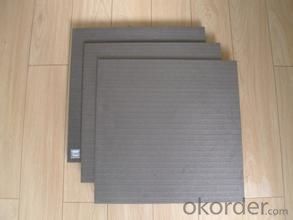
- Q: How does carbon impact the availability of clean water resources?
- Carbon impacts the availability of clean water resources in several ways. Firstly, the burning of fossil fuels releases carbon dioxide (CO2) into the atmosphere, contributing to climate change. This leads to rising global temperatures, which in turn affect the water cycle. Increased evaporation rates and altered precipitation patterns can result in droughts or excessive rainfall, both of which can disrupt the availability and quality of clean water sources. Additionally, carbon emissions contribute to ocean acidification, which harms marine ecosystems and disrupts the delicate balance of marine biodiversity, ultimately affecting the quality and availability of freshwater resources.
- Q: How does carbon impact the structure and function of ecosystems?
- Carbon is a fundamental element that plays a crucial role in shaping the structure and function of ecosystems. It is a building block of life, present in all living organisms, and is constantly cycling between the atmosphere, living organisms, and the Earth's surface. Carbon impacts ecosystems in various ways, both directly and indirectly. Firstly, carbon is a key component of organic matter, such as plants, animals, and decomposing organic materials. It provides the energy and nutrients necessary for the growth and development of organisms. Through photosynthesis, plants absorb carbon dioxide from the atmosphere and convert it into organic compounds, primarily carbohydrates, that serve as a source of energy and building material for other organisms. This process forms the basis of the food chain, as herbivores consume plants and carnivores consume herbivores. Thus, carbon is essential for the structure and functioning of ecosystems by sustaining the productivity and biodiversity of organisms within them. Moreover, carbon influences the physical structure of ecosystems. In terrestrial ecosystems, carbon is stored in vegetation and soils, forming carbon sinks. Forests, for example, store vast amounts of carbon in their biomass and soils, playing a crucial role in mitigating climate change by absorbing and sequestering carbon dioxide. The loss of these ecosystems, through deforestation or degradation, can release large amounts of carbon back into the atmosphere, contributing to the greenhouse effect and climate change. In marine ecosystems, carbon is stored in the form of dissolved inorganic carbon, which can impact ocean acidity. The increasing concentration of carbon dioxide in the atmosphere leads to ocean acidification, affecting the growth and survival of marine organisms, particularly those with calcium carbonate shells or skeletons, such as corals and mollusks. Furthermore, carbon influences the functioning of ecosystems through its role in nutrient cycling. Decomposition, the process by which organic matter is broken down and recycled, is largely driven by microorganisms that respire carbon dioxide. Decomposition releases nutrients such as nitrogen, phosphorus, and sulfur back into the soil, making them available for uptake by plants. This nutrient cycling is essential for maintaining the productivity and nutrient balance within ecosystems. Changes in carbon availability can affect the rates of decomposition and nutrient cycling, which in turn can impact the structure and functioning of ecosystems. Overall, carbon is a fundamental element that significantly impacts the structure and function of ecosystems. Its role in energy transfer, organic matter formation, nutrient cycling, and climate regulation makes it essential for the sustainability and functioning of all living organisms within an ecosystem. Understanding and managing carbon dynamics is crucial for maintaining the health and resilience of ecosystems in the face of environmental changes.
- Q: What are the impacts of carbon emissions on the stability of rainforests?
- The stability of rainforests is significantly affected by carbon emissions, resulting in negative consequences for both local ecosystems and the global climate. One notable impact is the direct contribution to climate change, as carbon dioxide (CO2) is a major greenhouse gas responsible for trapping heat in the atmosphere. This leads to an enhanced greenhouse effect, causing global temperatures to rise and negatively impact rainforests. As temperatures increase, rainforests face various challenges. Firstly, higher temperatures can result in more frequent and intense droughts, making it difficult for rainforests to maintain moisture levels. This leads to reduced water availability for plants and animals, causing stress, hindered growth, and increased susceptibility to diseases and pests. Additionally, droughts can raise the risk of wildfires, devastating large areas of rainforest and further disrupting the delicate ecosystem. Another significant consequence of carbon emissions is the alteration of rainfall patterns. Climate change disrupts regular rainfall cycles in rainforest regions, leading to either more intense rainfall events or prolonged dry periods. These changes disturb the natural balance within rainforests, affecting the growth and reproduction cycles of plants and animals. For example, certain tree species may struggle to reproduce or regenerate if their seeds require specific conditions that are no longer met due to altered rainfall patterns. Furthermore, carbon emissions contribute to increased concentrations of CO2 in the atmosphere, directly impacting plant physiological processes. While some studies suggest that higher CO2 levels can initially enhance plant growth through increased photosynthesis, the long-term effects are more complex. Elevated CO2 can disrupt the nutrient balance within rainforest ecosystems and may favor certain plant species over others, resulting in shifts in species composition and potentially reducing overall biodiversity. Lastly, the impacts of carbon emissions on rainforests extend beyond the local ecosystem. Rainforests act as crucial carbon sinks, absorbing a significant amount of the world's CO2 emissions. However, as rainforests face increased stress from climate change, their ability to absorb and store carbon may decrease. This creates a dangerous cycle, as reduced carbon storage in rainforests leads to even higher atmospheric CO2 levels, further worsening climate change. In conclusion, carbon emissions have profound effects on the stability of rainforests. From contributing to climate change and altering rainfall patterns to affecting plant physiology and reducing carbon storage capacity, the consequences are extensive and harmful. Protecting rainforests and reducing carbon emissions are crucial steps in preserving the stability and biodiversity of these vital ecosystems.
- Q: What are the effects of carbon emissions on agriculture?
- Carbon emissions have significant effects on agriculture, primarily through climate change. Increased levels of carbon dioxide in the atmosphere lead to rising temperatures, changes in precipitation patterns, and more frequent extreme weather events. These changes disrupt agricultural systems by altering growing seasons, reducing crop yields, and increasing the prevalence of pests and diseases. Additionally, carbon emissions contribute to the acidification of oceans, which can harm marine ecosystems and impact fisheries, further affecting food production. Overall, carbon emissions pose a serious threat to agricultural productivity and food security.
- Q: Is aluminum alloy expensive or high carbon steel expensive?
- Aluminum must be expensive, carbon steel is rubbish
- Q: How does carbon affect the formation of wildfires?
- Carbon does not directly affect the formation of wildfires, but it plays a crucial role in their severity and intensity. Carbon-rich vegetation, such as dry grasses and dead trees, acts as fuel for wildfires, enabling them to spread rapidly and intensify. When these fuels ignite, they release carbon dioxide, a greenhouse gas that contributes to climate change. Additionally, the combustion of carbon-rich materials during wildfires releases large amounts of carbon into the atmosphere, further exacerbating global warming.
- Q: What are the applications of carbon nanowires?
- Carbon nanowires have numerous applications in various fields. They are used in electronics for creating high-performance transistors, sensors, and conductive electrodes. Their exceptional mechanical properties make them suitable for reinforcement materials in composites, such as lightweight and strong materials for aerospace and automotive industries. Carbon nanowires also find applications in energy storage devices like batteries and supercapacitors, as well as in biomedical engineering for drug delivery systems and tissue engineering scaffolds.
- Q: What are the properties of carbon-based rubber?
- Carbon-based rubber, also known as carbon black-filled rubber, possesses several important properties that make it highly desirable for various applications. Firstly, carbon-based rubber exhibits excellent elasticity and flexibility, allowing it to withstand repeated stretching and compression without permanent deformation. This property makes it ideal for use in manufacturing products such as tires, gaskets, and seals. Secondly, carbon-based rubber displays outstanding resistance to abrasion and wear, ensuring that it can endure harsh conditions and prolonged use without deteriorating. This property is particularly beneficial in applications where the rubber material is subjected to friction or constant contact with rough surfaces. Additionally, carbon-based rubber demonstrates remarkable resistance to various environmental factors. It has excellent resistance to ozone, sunlight, and weathering, making it suitable for outdoor applications where it will be exposed to UV radiation and extreme temperatures. Its resistance to chemicals and oils further enhances its versatility, allowing it to be used in industries such as automotive, aerospace, and manufacturing. Another noteworthy property of carbon-based rubber is its electrical conductivity. This characteristic makes it an ideal material for applications that require static dissipation or protection against electrostatic discharge, such as in electronic devices, conveyor belts, and industrial flooring. Furthermore, carbon-based rubber exhibits good adhesion to various substrates, enabling it to form strong bonds when used in adhesive applications or as a lining material. Overall, the properties of carbon-based rubber make it a highly sought-after material due to its exceptional elasticity, abrasion resistance, environmental resistance, electrical conductivity, and adhesion capabilities.
- Q: How is carbon formed in stars?
- Carbon is formed in stars through a process called stellar nucleosynthesis, specifically in the later stages of a star's life. This occurs when helium nuclei (alpha particles) fuse together under high temperatures and pressures to form carbon nuclei.
- Q: How does carbon impact the quality of freshwater systems?
- Carbon can have a significant impact on the quality of freshwater systems. One of the main ways carbon affects these systems is through the process of carbon dioxide (CO2) emissions. When excess CO2 is released into the atmosphere, it can dissolve in rainwater and form carbonic acid. This acidification of freshwater bodies can lower the pH levels, making the water more acidic. High levels of acidity can be detrimental to many freshwater organisms, including fish, amphibians, and invertebrates. It can disrupt their reproductive systems, impair their growth and development, and even lead to the death of these organisms. Additionally, increased acidity can also affect the availability of essential nutrients in the water, further impacting the health and survival of aquatic life. Another way carbon impacts freshwater systems is through the process of eutrophication. Excess carbon can enter freshwater bodies through runoff from agricultural fields or wastewater treatment plants. This excess carbon acts as a nutrient, fueling the growth of algae and other aquatic plants. As these plants proliferate, they can create dense mats on the water's surface, blocking sunlight and depleting oxygen levels. The depletion of oxygen can lead to hypoxia, a condition where oxygen levels become dangerously low, resulting in the death of fish and other organisms. Additionally, the excess growth of algae can lead to algal blooms, which can release toxins into the water, further impacting the quality of freshwater systems. Furthermore, carbon can also impact the temperature of freshwater systems. Increased levels of carbon dioxide in the atmosphere contribute to global warming, which raises the overall temperature of the planet. As a result, freshwater systems may experience higher water temperatures, leading to changes in the ecosystem. Some species may struggle to adapt to these warmer conditions, while others, such as invasive species, may thrive. In conclusion, carbon has a significant impact on the quality of freshwater systems. It can lead to acidification, eutrophication, and changes in temperature, all of which have detrimental effects on the health and survival of aquatic organisms. Addressing carbon emissions and reducing our carbon footprint is crucial in protecting the integrity of freshwater systems and ensuring their long-term sustainability.
Send your message to us
Graphite Plate/CNBM Wholesale Carbon Graphite Plates
- Loading Port:
- China main port
- Payment Terms:
- TT OR LC
- Min Order Qty:
- 0 m.t.
- Supply Capability:
- 100000 m.t./month
OKorder Service Pledge
OKorder Financial Service
Similar products
Hot products
Hot Searches
Related keywords
